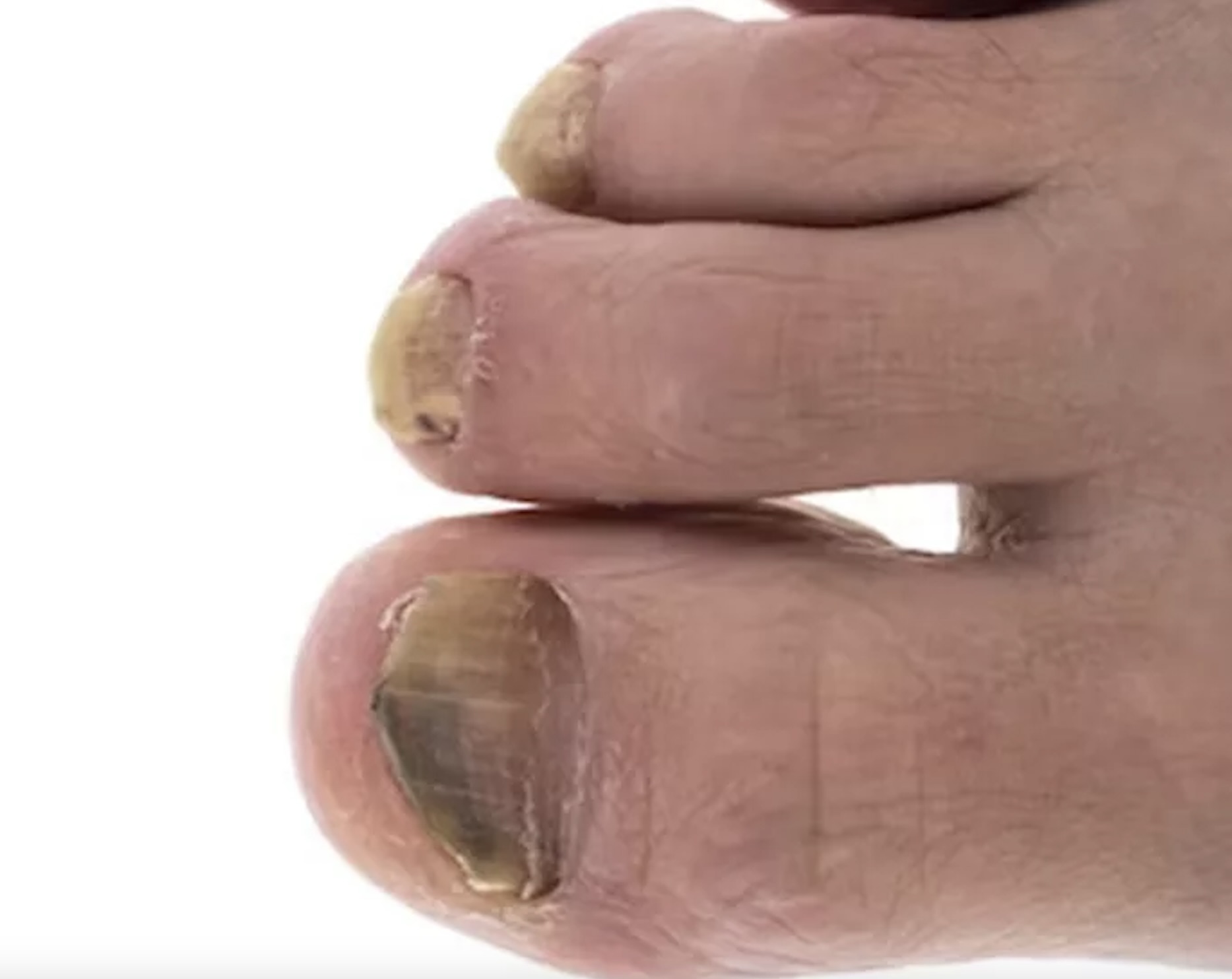What are the symptoms of toenail fungus?
The symptoms of toenail fungus (onychomycosis) can vary depending on the severity of the infection but typically include:
- Discolored Nails: The toenail may turn yellow, brown, white, or even green.
- Thickened Nails: The affected nail often becomes thicker and may be more difficult to trim.
- Brittle or Crumbly Nails: The nail can become brittle and start to crumble or break.
- Distorted Shape: The nail may become misshapen or warped.
- Separation from the Nail Bed: In some cases, the infected nail may start to lift and separate from the nail bed (onycholysis).
- Foul Odor: A mild to foul odor may be present, particularly if the infection is advanced.
- Pain or Discomfort: In more severe cases, the affected nail or surrounding area can become painful, especially when pressure is applied.
Toenail fungus can develop slowly over time, and early signs may be subtle. If left untreated, the infection can spread to other nails or surrounding skin.
What are the causes of toenail fungus?
Toenail fungus is primarily caused by various types of fungi, most commonly dermatophytes, but can also involve yeasts and molds. The fungi thrive in warm, moist environments and can easily spread in certain conditions. Here are the main causes:
- Fungal Infections: Dermatophytes are the most common cause of toenail fungus. They are the same fungi that cause athlete’s foot and can spread from the skin to the toenails.
- Moist Environments: Walking barefoot in damp communal areas like locker rooms, public showers, and swimming pools increases the risk of contracting toenail fungus.
- Injuries: Nail trauma or injury can create openings for fungi to enter and infect the nail.
- Poor Foot Hygiene: Wearing the same shoes or socks repeatedly without allowing them to dry can create an environment conducive to fungal growth.
- Tight Shoes: Wearing tight, poorly ventilated shoes traps moisture and warmth, which promotes fungal growth.
- Underlying Health Conditions: People with conditions like diabetes, weakened immune systems, or poor circulation are more prone to toenail fungus.
- Aging: Older adults are more susceptible due to reduced blood circulation, slower nail growth, and prolonged exposure to fungi over time.
- Previous Fungal Infections: Individuals who have had athlete’s foot or fungal skin infections are at higher risk of developing toenail fungus.
The fungus is highly contagious, so contact with contaminated surfaces or sharing items like nail clippers, towels, or shoes can also lead to infection.
What is the treatment for toenail fungus?
Treatment for toenail fungus can vary based on the severity and persistence of the infection. Common treatment options include:
- Topical Antifungal Medications: These include antifungal creams, gels, or nail lacquers (like ciclopirox or efinaconazole) applied directly to the affected nail. However, these are typically more effective for mild cases.
- Oral Antifungal Medications: Oral medications like terbinafine (Lamisil) and itraconazole (Sporanox) are often prescribed for more severe infections. These medications help the nail grow free of infection but may require several months of treatment.
- Medicated Nail Polish or Cream: Antifungal nail polish (like Penlac) can be painted on the nails daily, though results may take a year or more.
- Laser and Light Therapy: Certain types of laser therapy and photodynamic light treatments are used to kill the fungus, but these treatments are usually more expensive and may not be covered by insurance.
- Nail Removal: For severe or persistent infections that don’t respond to other treatments, surgical or chemical removal of the nail may be recommended.
- Home Remedies: Although not as effective as medical treatments, some people try home remedies like tea tree oil, Vicks VapoRub, or vinegar soaks. These are more supportive measures rather than cures.
- Hygiene and Preventive Care: Keeping feet dry and clean, trimming nails regularly, and avoiding tight shoes and shared personal items are crucial steps to prevent reinfection or worsening of the condition.
Treatment can take a long time, often several months, and patience is necessary as toenails grow slowly. Consulting a healthcare provider for the best course of treatment is essential, especially if you have underlying health conditions like diabetes.

Leave a Reply
You must be logged in to post a comment.